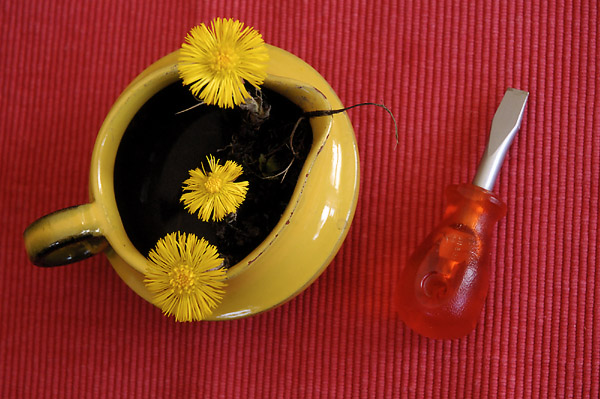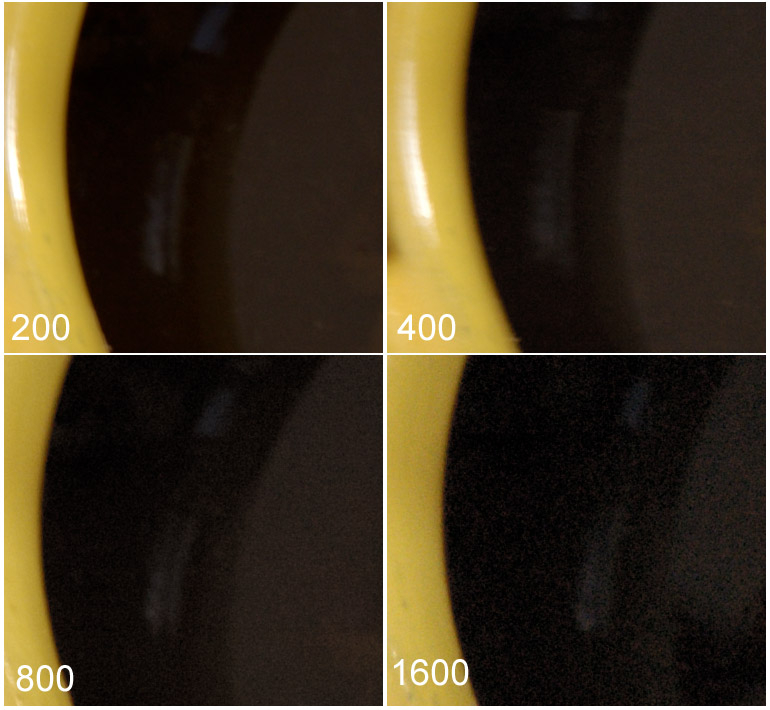 |
|
| Spring
Is Here D70, AFS 18-70 mm f/3.5-4.5 G ED-IF Nikkor @ 1600 "ISO", NEF format |
© Bjørn Rørslett/NN |
| Nikon D70 Digital Camera Reviewed | |
| by Bjørn Rørslett | |
4.
Noise Performance
Digital image noise can be obtrusive, but a nearly noiseless digital image in fact can be perceived as cold and sterile. Thus, not all kinds of noise are bad as far as photography is concerned. Just rewind your memory to the old glorious days of souped Tri-X when megagrain (not megapixel) was in the vogue.
I think we quite easily accept some noise in the images when that noise manifests itself sufficiently random, in nature as well as in its spatial distribution. Visual patterns of noise, and in particular banding of the image, are far more objectionable.
Underutilization of the dynamic range of the digital imager is a major putative candidiate for noise generation. This occurs either by user error (underexposure) or by deficiencies in the metering system of the camera emphasizing highlights instead of shadows when scene contrast is high. The metering system of D70 performs quite well in keeping the highlights and shadows under joint control, and thanks to the 1005-element RGB sensor sufficient emphasis is paid to non-normally coloured situation as well. For such a low-end camera, the metering is truly first-class and the metering accuracy belies the system price.
If you underexpose severely, banding can and will occur on the D70. The amount of exposure error likely to cause this problem will fluctuate according to the ambient light levels and you may get off the hook much easier when erring in sunlight than at dusk or dawn. If in doubt, simply bracket your shots on the plus side, and you should be fine. Probably you can observe banding effects more easily with D70 than with D2H, but that shouldn't come as a surprise. Also, my impression is that the D2H (or D1X) images are a wee bit cleaner as far as colour noise is concerned, but once again, this concern shouldn't concern the end user too much.
Automatic white-balance is another less readily recognised culprit in causing digital noise. We have become sloppy technicians preferring to click a button in software to get a "white" rendition instead of attaching an appropriate colour-balancing filter to the lens. Thus, when shooting under incandescent lighting and setting the colour balance by automatic means, we are (but shouldn't be) surprised and annoyed by appearance of blue-channel noise, and don't consider the tremendous additional boost of blue colours needed to balance a blue-deficient light (incandescent light) as white. I found again that D70 is more readily impacted by this issue than is my D2H, a not entirely surprising find. A final way of reducing noise is to max out aperture (and/or shutter speed) before you dial in a higher "ISO" setting on the camera. To this end, getting a fast lens such as the AF 50/1.4 Nikkor, is a prudent move.
Sometimes however you do need to, or simply want to, set sensitivity to something above the nominal 200 ISO equivalency value. What is the noise penalty incurred by such doubtful practice? The illustrations below can provide the necessary food for thoughts on this issue.
 |
|
| Spring
Is Here D70, AFS 18-70 mm f/3.5-4.5 G ED-IF Nikkor @ 1600 "ISO", NEF format |
© Bjørn Rørslett/NN |
My test setup, above, indicates that many scenes are satisfactorily depicted even at the upper range of the sensitivity provided by D70. Tonality and texture are more than adequately rendered. Since high "ISO" impact shadow rendition and dynamics first with digital cameras, I've given a series of crops from the central shadow area of thje image. Below are the 100% crops taken with "ISO" settings from 200 to 1600, using the AFS 18-70 Nikkor. Lens set at f/8, exposure with D70 in "A" mode and (as always) using the raw NEF format. No sharpening or other modifications to the raw (NEF) file have been performed either in camera or in Nikon Capture 4.1. (Since the shots were taken handheld, the crop delimitate slight diffferent areas, but otherwise should be entire comparable). It is apparent that the colour rendition of 200 - 400 "ISO" is fairly similar, and that some colour desaturation occurs at the higher speed settings. Colour noise, the digital manifestation of "graininess", increases with sensitivity as expected, but not to any extraordinary amount. Shadow detail is kept reasonably well up to 800, but suffers at 1600 "ISO" (lower panel in figure below). Perhaps wisely, Nikon doesn't offer any "HI" speed setting above the 1600 mark as with the D1- and D2-series.
 |
You are entitled to draw your own conclusions of course, but I for one won't hesitate upping the "ISO" equivalency if needs dictate so. The graininess of the image at 1600 "ISO" is quite visible, but not objectionable in my view. And of course, running a good noise-reduction program on these images will improve the appearance even further.
I observed a peculiar, regular noise pattern which started to appear on images shot at very high shutter speeds, from around 1/2500 sec and upwards. Thus, evenly illuminated sky areas tended to become riddled with a faint grid-like pattern which was plainly evident at 1/800 sec exposures. I've never seen anything quite like this before, so cannot speculate neither about the cause nor the cure for this issue. I'd like to add that you have to combine factors of high speed (and a large aperture of the lens) to get into this kind of trouble, and the gridded pattern is only detected when the image is grossly magnified.
 |
|
| Left: Unsharp mask (USM) to enhance gridded pattern | Right: Original crop |
| Grid-pattern noise 200 % enlargements of a 127 by 81 pixel crop D70, 45 mm f/2.8 Nikkor AI-P, |
|
The example above illustrates the issue. However, you should see this issue in its proper context, thus the crop represents a mere 0.17 % fraction of the entire frame and in order to make the gridded pattern clearly visible, I had to enlarge the crop even further and add some unsharp masking as well. So, there is an issue here, but likely something most end users never are going to observe by themselves. Let's keep a perspective here.